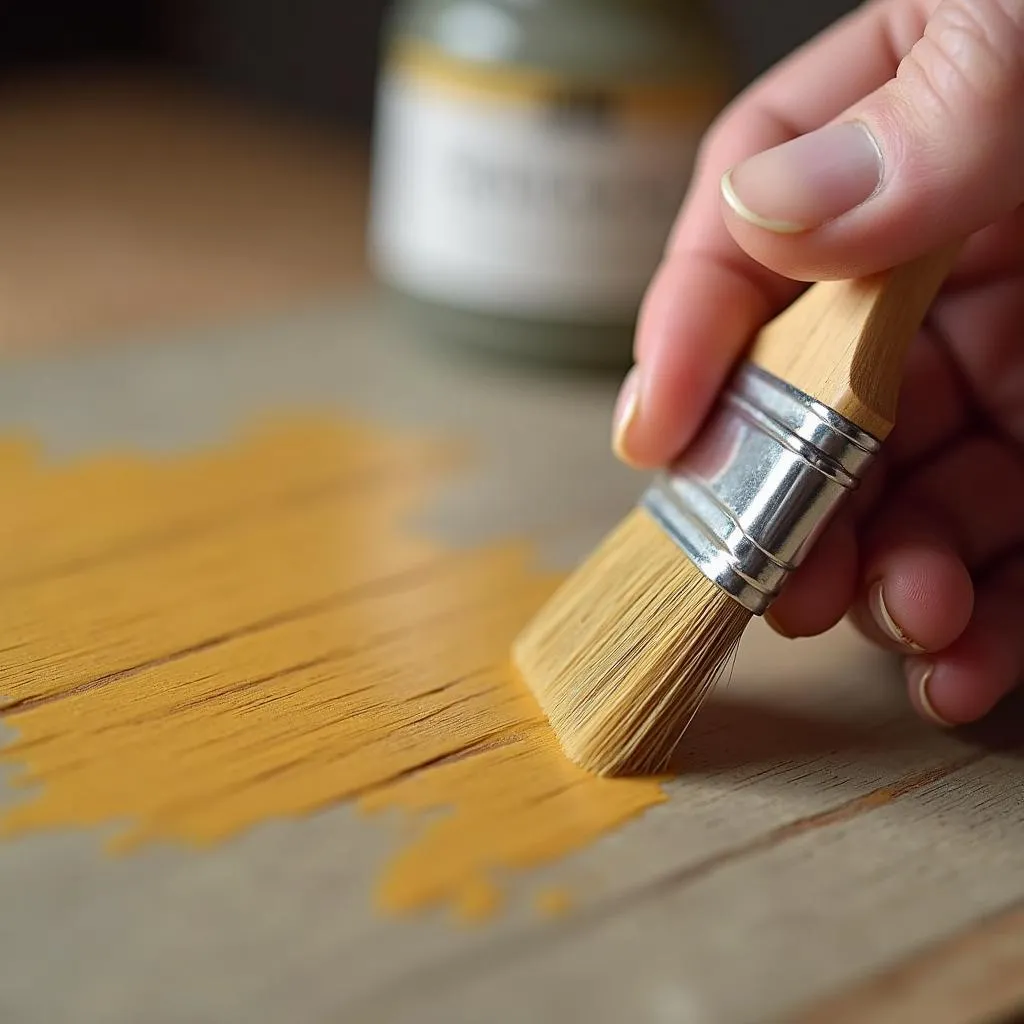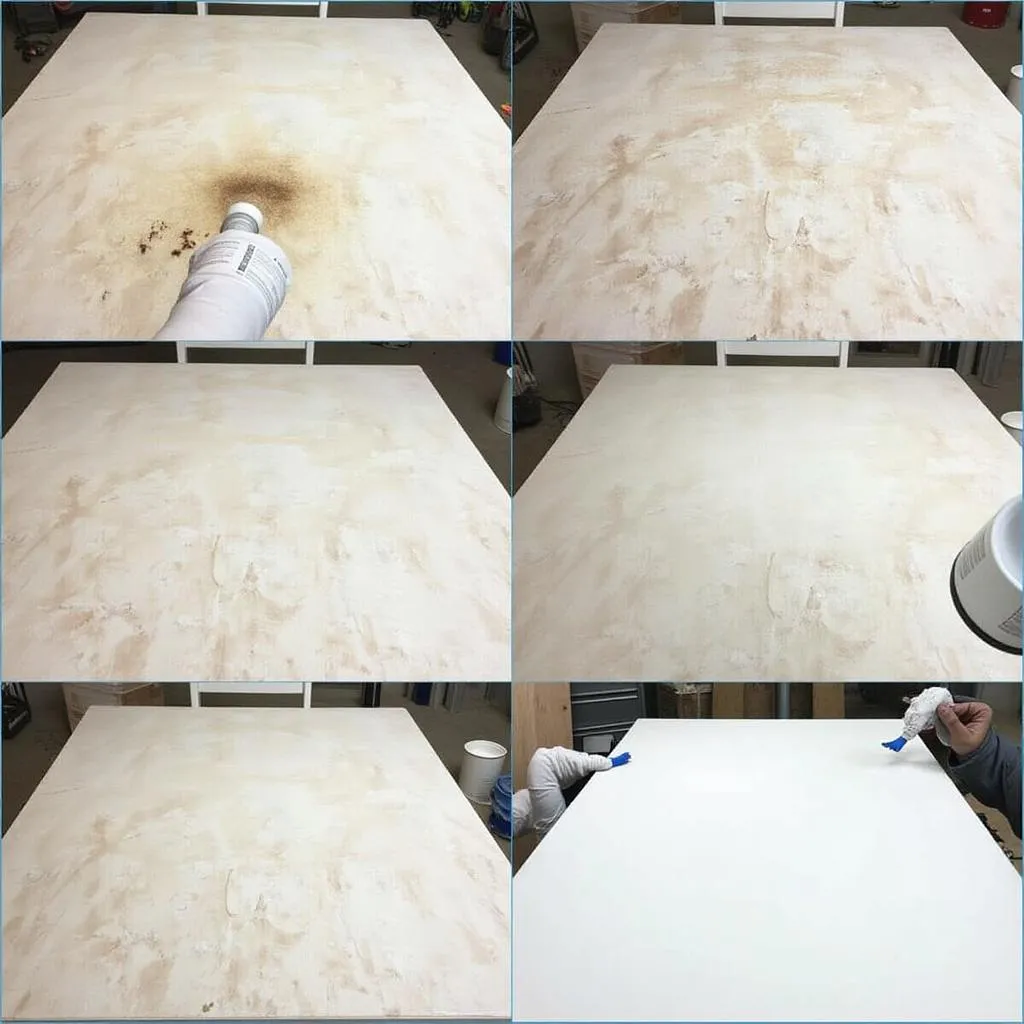Color bleed – that frustrating phenomenon where one color seeps into another – can quickly turn a DIY painting project into a messy nightmare. But don’t worry! Whether you’re dealing with bleed-through from an old paint layer or trying to prevent it in your next painting endeavor, this comprehensive guide will equip you with all the knowledge and techniques you need to banish color bleed for good.
Understanding the Enemy: What Causes Color Bleed?
Before we dive into the solutions, let’s understand what causes color bleed in the first place. This common painting problem usually stems from:
- Porous surfaces: Materials like wood and drywall can absorb paint unevenly, causing underlying colors to resurface.
- Tannins and stains: Certain woods, like redwood and cedar, contain tannins that can bleed through even multiple layers of paint. Water stains and smoke damage can also lead to unsightly discoloration.
- Improper priming: Using the wrong primer or skipping it altogether is a surefire way to invite color bleed.
- Low-quality paint: Thin or low-quality paints often lack the pigment density to effectively cover existing colors.
Prevention is Key: Stopping Color Bleed Before it Starts
The best way to tackle color bleed is to prevent it from happening in the first place. Here’s your proactive game plan:
1. Prepare Your Surface Meticulously
- Clean: Thoroughly clean the surface with a suitable cleaner to remove dirt, grime, and mildew.
- Scrape: Scrape away any loose or flaking paint.
- Sand: Lightly sand the surface to create better adhesion for the primer.
2. Prime, Prime, Prime!
- Choose the right primer: Use a stain-blocking primer for surfaces prone to tannin bleed or water stains. For general purposes, an oil-based or shellac-based primer works best.
- Apply generously: Don’t skimp on the primer! Apply a thick, even coat and allow it to dry completely before painting.
3. Invest in Quality Paint
- Choose high-quality paint: Opt for paints with high pigment density and good coverage.
- Apply multiple thin coats: Two thin coats are better than one thick coat. Allow each coat to dry completely before applying the next.
Combatting Existing Color Bleed: Effective Removal Techniques
Dealing with existing color bleed? Don’t despair! These techniques can help you reclaim your painted surfaces:
1. The Power of Primer (Again!)
- Apply stain-blocking primer: Even if you’ve already painted, applying a stain-blocking primer over the affected area can help seal in the offending color.
- Allow ample drying time: Let the primer dry completely before applying a fresh coat of paint.
2. Embrace the Magic of Shellac
- Shellac to the rescue: Shellac is a powerful sealant that can effectively block tough stains and tannins.
- Apply thinly and evenly: Use a natural bristle brush and apply a thin, even coat of shellac over the bleed-through.
- Sand lightly and repaint: Once the shellac dries, lightly sand the surface and apply your desired paint color.
 Applying Shellac to Seal Color Bleed
Applying Shellac to Seal Color Bleed
3. Call in the Professionals
For severe or persistent color bleed, it’s best to consult with a professional painting contractor. They have the experience and expertise to assess the situation and recommend the most effective course of action.
Expert Insights: Tips from the Pros
“In my years of experience as a professional painter, I’ve seen countless cases of color bleed. The most common mistake homeowners make is neglecting the importance of proper surface preparation and priming. Remember, a quality paint job starts with a solid foundation!” – John Miller, Master Painter with 20+ years of experience.
FAQs: Answering Your Burning Questions
Q1: Can I use a water-based primer to prevent color bleed?
While water-based primers are generally effective, they might not be sufficient for surfaces prone to heavy staining or tannin bleed. In such cases, an oil-based or shellac-based primer is recommended.
Q2: How many coats of primer do I need to apply?
In most cases, one to two coats of primer are sufficient. However, for surfaces with severe staining, additional coats might be necessary.
 Applying Multiple Primer Coats for Severe Staining
Applying Multiple Primer Coats for Severe Staining
Q3: Can I paint over shellac?
Yes, you can paint over shellac. However, it’s crucial to allow the shellac to dry completely before painting and to use a compatible paint type.
Conclusion
Conquering color bleed is entirely achievable with the right knowledge and techniques. By understanding its causes, taking preventative measures, and utilizing effective removal strategies, you can ensure a flawless finish for all your painting projects. Remember, patience and attention to detail are key.
Need help tackling a stubborn color bleed issue? Contact us at 0373298888, email us at [email protected], or visit us at 86 Cầu Giấy, Hà Nội. Our 24/7 customer support team is always ready to assist you!

